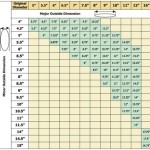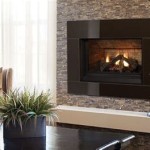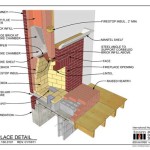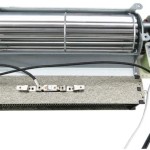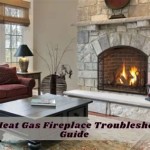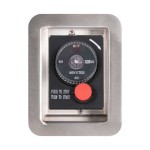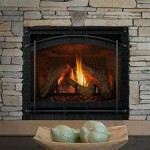Modern Style Fireplaces: A Comprehensive Overview
The modern fireplace has evolved significantly from its traditional counterpart, becoming a focal point of contemporary design and offering enhanced functionality. Modern styles prioritize clean lines, minimalist aesthetics, and innovative technologies to create a visually appealing and efficient heating source. This article explores the various aspects of modern fireplaces, including their key characteristics, material options, fuel types, and installation considerations.
Key Characteristics of Modern Fireplaces
Modern fireplaces distinguish themselves through several defining characteristics. These features contribute to their unique aesthetic and functional appeal.
Firstly, geometric designs are prominent. Sharp angles, rectangular shapes, and symmetrical forms are frequently employed. This contrasts with the more ornate and decorative styles often found in traditional fireplaces. The emphasis is on simplicity and clarity of form, aligning with broader trends in modern architecture and interior design.
Secondly, minimalist aesthetics are central to the modern fireplace design. The goal is to remove unnecessary ornamentation and focus on the essential elements. This translates to clean surfaces, hidden hardware, and a general lack of intricate detailing. The fireplace is intended to integrate seamlessly with the surrounding décor, rather than overpowering it.
Thirdly, integration with technology is a key factor. Many modern fireplaces incorporate smart features such as remote control operation, programmable timers, and automated temperature regulation. These technologies enhance convenience and energy efficiency, allowing users to precisely control the fireplace's performance and minimize energy waste.
Fourthly, expansive viewing areas are often incorporated. Large glass panels provide unobstructed views of the flames, creating a dramatic visual effect. This emphasis on visual appeal elevates the fireplace from a purely functional heating appliance to a captivating design element.
Finally, seamless integration with the surrounding environment is a common goal. Modern fireplaces are often designed to blend seamlessly with the architectural style of the home. This can involve using materials that complement existing finishes, positioning the fireplace to optimize airflow and natural light, and incorporating custom design elements that reflect the homeowner's personal style.
Material Options for Modern Fireplaces
The selection of materials plays a crucial role in the overall aesthetic and performance of a modern fireplace. Several options are available, each offering unique characteristics and advantages.
Steel is a popular choice due to its durability, versatility, and clean appearance. It can be easily formed into various shapes and finishes, allowing for a wide range of design possibilities. Steel is also highly heat-resistant, making it well-suited for use in fireplace construction. Stainless steel is particularly favored for its corrosion resistance and modern aesthetic.
Concrete offers a more textured and industrial look. It can be cast into custom shapes and finishes, providing a unique and personalized appearance. Concrete is also a relatively inexpensive material, making it an attractive option for budget-conscious homeowners. However, concrete is porous and may require sealing to prevent staining.
Glass is primarily used for the viewing area, but it can also be incorporated into other design elements. Tempered glass is essential for safety, as it is designed to withstand high temperatures and resist shattering. The clarity and size of the glass panel significantly contribute to the overall visual impact of the fireplace.
Stone, both natural and manufactured, can add a touch of elegance and sophistication to a modern fireplace. Natural stone options include granite, marble, and slate, each with unique patterns and colors. Manufactured stone offers a more consistent appearance and can be more cost-effective than natural stone. The weight and installation requirements of stone should be carefully considered.
Tile is another versatile option for cladding a modern fireplace. Ceramic and porcelain tiles are available in a wide range of colors, sizes, and patterns. They are also relatively easy to clean and maintain. Tile can be used to create a variety of design effects, from subtle textures to bold geometric patterns.
Fuel Types for Modern Fireplaces
Modern fireplaces offer a variety of fuel options, each with its own advantages and disadvantages in terms of efficiency, aesthetics, and environmental impact.
Gas fireplaces are a popular choice due to their convenience and ease of use. They can be fueled by natural gas or propane, and they offer instant on/off operation. Gas fireplaces typically feature realistic-looking artificial logs and adjustable flame heights. They are also relatively clean-burning, producing fewer emissions than wood-burning fireplaces.
Electric fireplaces are another convenient and clean-burning option. They do not require venting, making them suitable for installation in a variety of locations. Electric fireplaces use electric heating elements to generate heat, and they often feature realistic flame effects created by LED lights. They are relatively energy-efficient, although the cost of electricity should be considered.
Wood-burning fireplaces offer the traditional aesthetic and aroma of a real fire. However, they require a chimney for venting and can produce significant emissions. Modern wood-burning fireplaces are often designed with improved combustion technology to reduce emissions and improve efficiency. Proper venting is crucial for safe operation.
Ethanol fireplaces are a relatively new option that burns liquid ethanol fuel. They do not require venting, making them suitable for installation in a variety of locations. Ethanol fireplaces produce a clean-burning flame and are relatively environmentally friendly. However, the cost of ethanol fuel can be higher than other options.
Gel fireplaces are similar to ethanol fireplaces, but they use a gel fuel that is typically contained in disposable cans. They offer a convenient and portable option for creating a fire-like ambiance. Gel fireplaces do not require venting, but they produce relatively little heat compared to other types of fireplaces.
Installation Considerations for Modern Fireplaces
Proper installation is crucial for the safe and efficient operation of a modern fireplace. Several factors should be considered during the installation process.
Firstly, venting requirements vary depending on the fuel type. Wood-burning fireplaces require a chimney for venting smoke and combustion gases. Gas fireplaces may require a vent, depending on the model. Electric and ethanol fireplaces typically do not require venting. Compliance with local building codes is essential.
Secondly, clearances to combustible materials must be observed. Fireplaces generate significant heat, and it is important to maintain adequate clearances between the fireplace and any combustible materials, such as wood framing or furniture. Manufacturer's specifications should be strictly followed.
Thirdly, gas line installation requires professional expertise. If installing a gas fireplace, a qualified gas fitter should be hired to connect the fireplace to the gas line. Proper gas line sizing and connections are essential for safe operation.
Fourthly, electrical connections must be performed by a qualified electrician. If installing an electric fireplace, a dedicated electrical circuit should be installed to prevent overloading. Proper grounding is essential for safety.
Finally, professional installation is generally recommended. While some homeowners may be tempted to install a fireplace themselves, professional installation ensures that the fireplace is installed correctly and safely. A qualified installer can also provide advice on proper operation and maintenance.
Modern fireplaces represent a significant advancement in design and technology compared to their traditional counterparts. By understanding the key characteristics, material options, fuel types, and installation considerations, homeowners can make informed decisions and choose a modern fireplace that enhances the aesthetic appeal and functionality of their homes.

Best Modern Fireplace Designs Blaze
:strip_icc()/ScreenShot2021-07-28at9.00.12PM-21759d9d71e94c138ae7af56e0e31ade.png?strip=all)
30 Modern Fireplace Ideas To Inspire A Redesign

Unveiling The 63 Best Modern Fireplace Design Ideas In 2024 Living Room With Home

36 Fireplace Decor Ideas Modern Mantel

Natural Stacked Stone Veneer Fireplace Ideas

20 Of The Most Amazing Modern Fireplace Ideas Design Luxury Living Room

54 Modern Fireplace Gorgeous Look Stylish Designs

Modern Fireplace Ideas Design Recommendations By The Pros

Top 50 Modern Fireplace Designs

Unveiling The 63 Best Modern Fireplace Design Ideas Remodel

